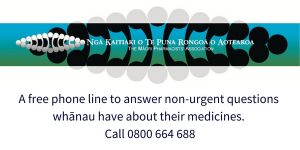Like all medicines, methylprednisolone can cause side effects, although not everyone gets them. Most side effects are related to the dose you are taking and how long you are taking methylprednisolone for. Read more about taking steroids long term.
Changes in behaviour and mood
Methylprednisolone, especially in high doses, can cause changes in personality, behaviour and mood, such as:
- irritability, agitation and restlessness
- sleep problems (insomnia) and nightmares
- mood swings and aggression
- low mood, depression and even suicidal thoughts.
These symptoms typically develop within a few days of starting methylprednisolone, but they can occur at any time, including after stopping treatment.
While these symptoms often go away when your dose is reduced or methylprednisolone is stopped, stopping methylprednisolone must be done under the guidance of your doctor. Stopping too quickly can make these symptoms worse. You are at higher risk of mood and behaviour changes if you have previously had similar reactions to steroids (corticosteroid-induced psychosis), or if you have a personal or family history of psychiatric disorders.
If you have changes in mood and behaviour, especially depression and suicidal thoughts, tell your doctor immediately or phone Healthline 0800 611 116.
Other side effects
| Side effects |
What should I do? |
|
|
- Take methylprednisolone in the morning or at least 3 hours before bedtime.
|
- Headache
- Muscle weakness
- Feeling tired
|
- These are quite common when you first start taking methylprednisolone and usually go away with time.
- Tell your doctor if troublesome.
|
- Increased appetite (wanting to eat more)
|
- Methylprednisolone increases your appetite.
- Follow a healthy, balanced diet to maintain your weight.
|
- Fluid retention causing swollen ankles and feet
|
- Whenever possible, sit with your feet raised.
- Avoid foods with high salt content.
- Tell your doctor if this happens.
|
|
|
- Methylprednisolone can cause an increase in blood glucose.
- If you have diabetes, you may need to increase the dose of your diabetes medicine to control your blood glucose. Talk to your doctor about this.
- Methylprednisolone can also cause the onset of diabetes in people who are at risk of diabetes.
- Your doctor will monitor your blood glucose levels regularly.
|
- Eye pain and changes to your vision
|
- Tell your doctor immediately or phone Healthline 0800 611 116.
|
- Problems with your stomach such as pain, blood in your stool (poo) or dark-coloured stool (poo)
|
- Tell your doctor immediately or phone Healthline 0800 611 116.
|
| Read more about medicines and side effects and reporting a reaction you think might be a side effect. |








